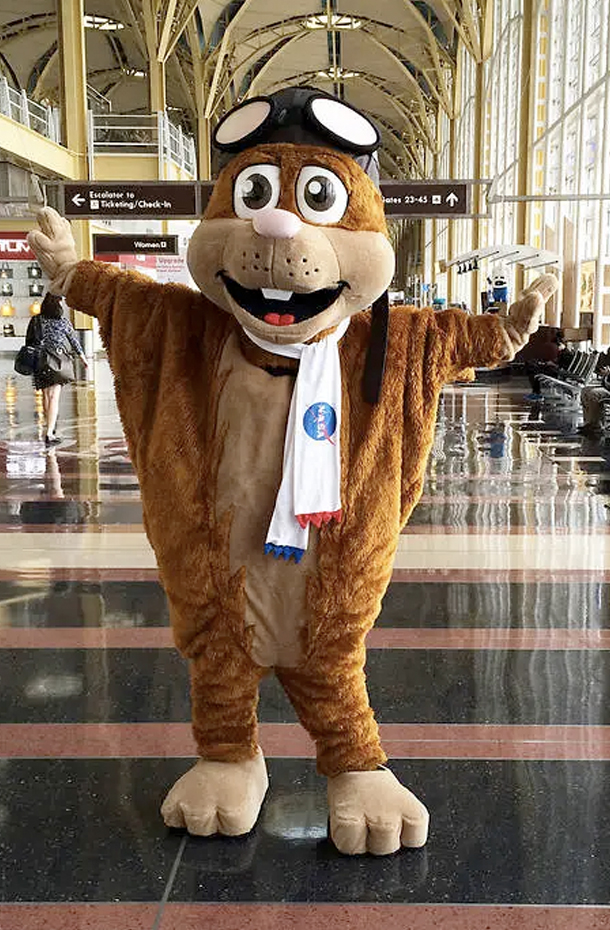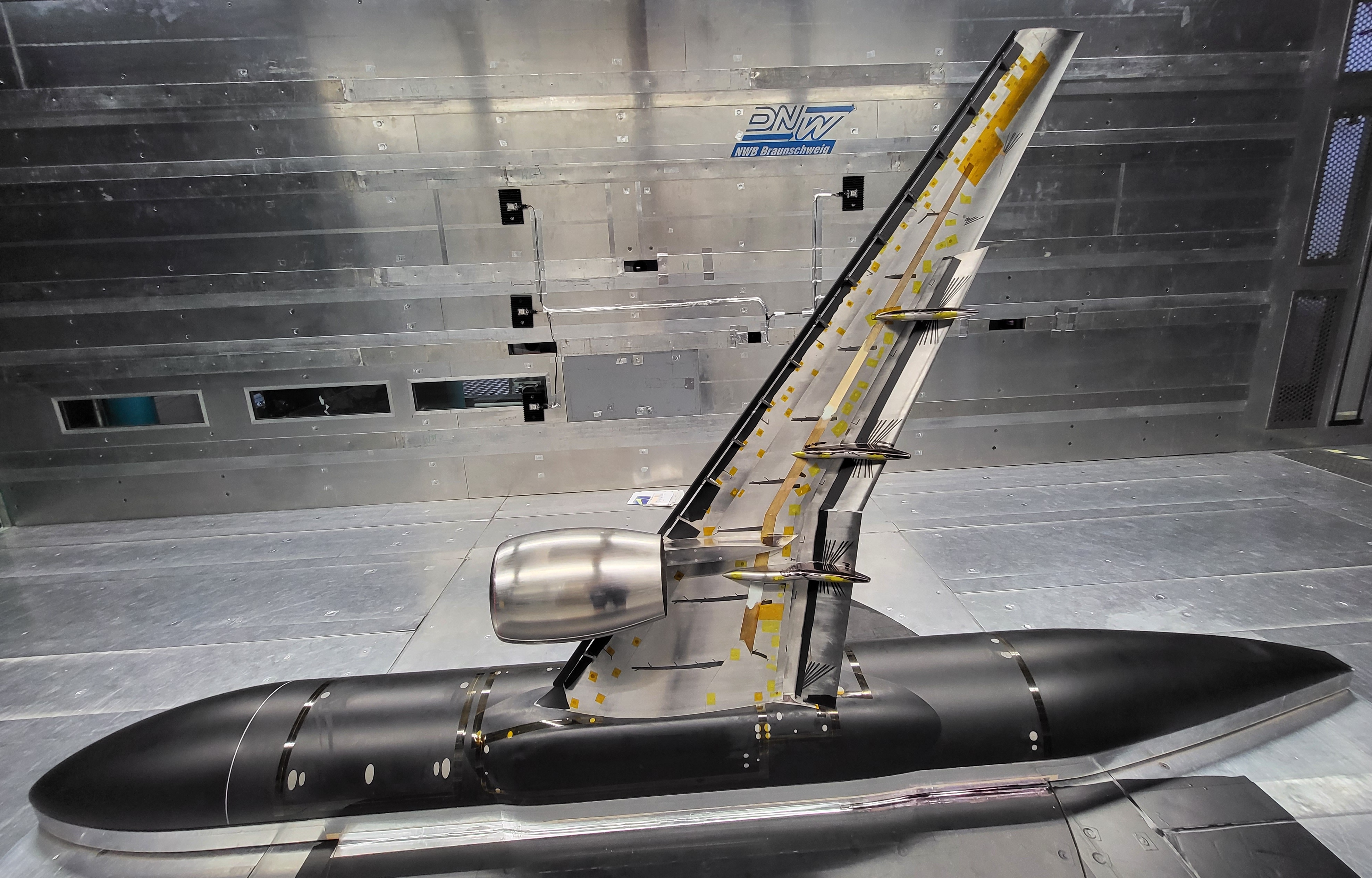4 min read
Preparations for Next Moonwalk Simulations Underway (and Underwater) 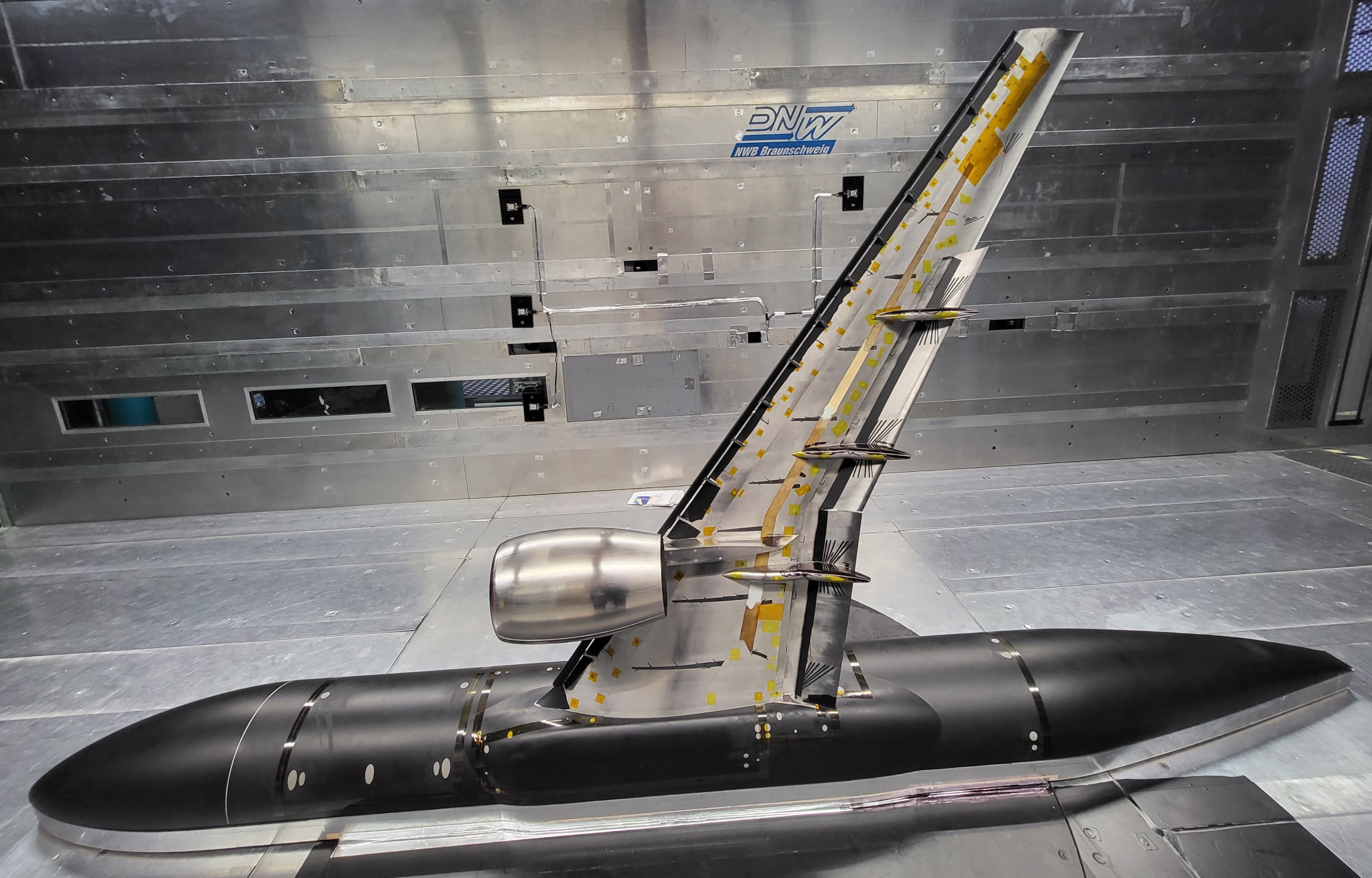 The NASA 5.2% scale, semi-span version of the High Lift Common Research Model installed in the German-Dutch Wind Tunnels – Braunschweig Low-Speed Wind Tunnel in Braunschweig, Germany on May 4, 2023. NASA NASA and its international partners are using the same generically shaped wing design to create physical and digital research models to better understand how air moves around an aircraft during takeoff and landing.
The NASA 5.2% scale, semi-span version of the High Lift Common Research Model installed in the German-Dutch Wind Tunnels – Braunschweig Low-Speed Wind Tunnel in Braunschweig, Germany on May 4, 2023. NASA NASA and its international partners are using the same generically shaped wing design to create physical and digital research models to better understand how air moves around an aircraft during takeoff and landing.
Various organizations are doing computer modeling with computational tools and conducting wind tunnel tests using the same High Lift Common Research Model (CRM-HL), a NASA-led effort.
This ensures the aerospace community is getting accurate answers despite any differences in testing conditions or facilities.
What started as a voluntary partnership in 2019 has grown into the CRM-HL ecosystem with 10 partners across five countries. The team is building eight wind tunnel models, which will be tested at eight wind tunnels during the next three years.
What we are learning today would take us 10 years to do alone. The partners are using each other’s research for the mutual benefit of all.  Melissa Rivers
Melissa Rivers
NASA Researcher
“What we are learning today would take us 10 years to do alone,” said Melissa Rivers, subproject manager in NASA’s Transformational Tools and Technologies project, which leads the CRM-HL research. “The partners are using each other’s research for the mutual benefit of all.”
The team will define and assess common wind tunnel conditions in more than 14 tests across the globe.
“Through this research, we are learning about differences that occur when we build and test several identical airplane models in multiple wind tunnels,” Rivers said.
Researchers can use data from these wind tunnel tests to then check if the research tools using computational fluid dynamics are accurately predicting the physics of an aircraft.
“The computer simulations and computational fluid dynamics tools are key contributions from this international partnership,” said NASA’s Mujeeb Malik, a lead researcher for the project. “The runs [tests] are critical to figuring out what we do not know and determining what we want to test.”
The partners are developing a standard way to communicate their data so that everyone can better compare the results from their models and wind tunnel tests.
NASA also is developing a cloud-based solution to give each partner access to the data and foster collaboration.
To view this video please enable JavaScript, and consider upgrading to a web browser that supports HTML5 video
This silent, 20-second video shows a computer simulation of air flowing over a 5.2% scale of NASA’s High Lift Common Research Model wing design. The color key at lower right indicates the speed of the air.NASA Expanding Collaborations with Common Research Models This high lift research effort builds on the success of a previous Common Research Model effort focused on transonic speeds.
Between 2008 and 2014, many organizations built their own versions of NASA’s model. They then tested the models in tunnels around the world.
The transonic model helped the community better understand the physics of aircraft at cruise. The current high lift model focuses on the takeoff and landing portions of flight when the aircraft is flying slower than at cruise.
Since there are more wind tunnels that can run low-speed tests, more partners can participate in the current collaboration.
The partners working on the CRM-HL span five countries – United States, United Kingdom, France, Germany, and Japan and include:
NASA German Aerospace Center National Office for Aerospace Studies and Research, the French Aerospace Lab JAXA (Japan Aerospace Exploration Agency) European Transonic Wind Tunnel Aerospace Technology Institute Boeing Kawasaki Heavy Industries QinetiQ Airbus 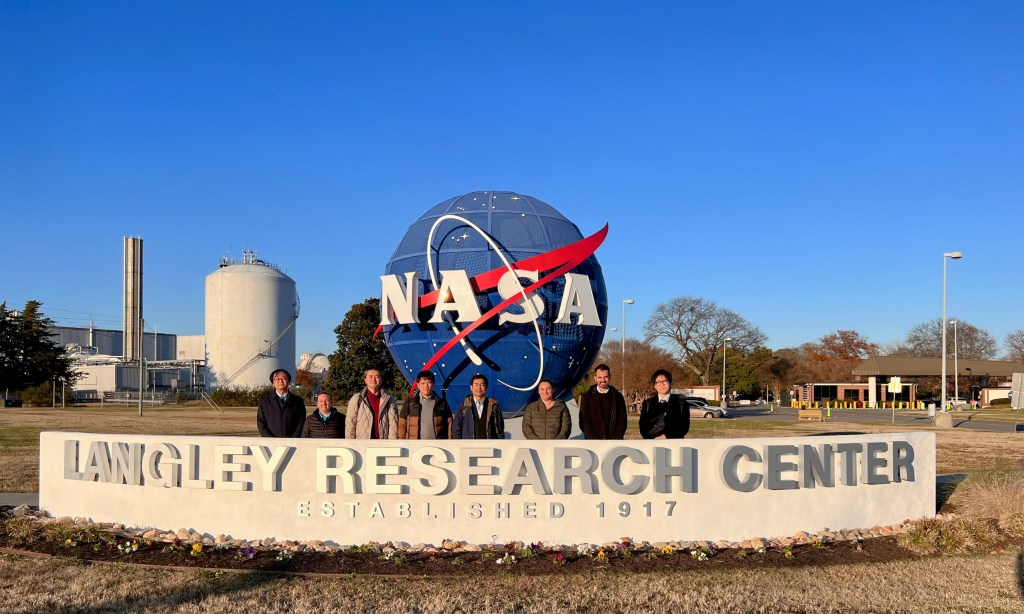 Researchers from JAXA (Japan Aerospace Exploration Agency) visited NASA’s Langley Research Center in Hampton, Virginia on November 28, 2023, as part of their collaborations on the High Lift Common Research Model.NASA
Researchers from JAXA (Japan Aerospace Exploration Agency) visited NASA’s Langley Research Center in Hampton, Virginia on November 28, 2023, as part of their collaborations on the High Lift Common Research Model.NASA  NASA and JAXA (Japan Aerospace Exploration Agency) researchers check out the 10% scale version of NASA’s High Lift Common Research Model in the 14-by-22-foot subsonic wind tunnel at NASA’s Langley Research Center in Hampton, Virginia on November 28, 2023. In the front row is JAXA’s Yosuke Sugioka, left, NASA’s Courtney Winski, and Andrea Sansica. In the middle row is NASA’s Sarah Langston, left, Melissa Rivers, and Kawasaki Heavy Industry’s Takahiro Hashioka. In the back row is JAXA’s Masataka Kohzai, left, Takahiro Uchiyama, and Mitsuhiro Murayama.NASA
NASA and JAXA (Japan Aerospace Exploration Agency) researchers check out the 10% scale version of NASA’s High Lift Common Research Model in the 14-by-22-foot subsonic wind tunnel at NASA’s Langley Research Center in Hampton, Virginia on November 28, 2023. In the front row is JAXA’s Yosuke Sugioka, left, NASA’s Courtney Winski, and Andrea Sansica. In the middle row is NASA’s Sarah Langston, left, Melissa Rivers, and Kawasaki Heavy Industry’s Takahiro Hashioka. In the back row is JAXA’s Masataka Kohzai, left, Takahiro Uchiyama, and Mitsuhiro Murayama.NASA 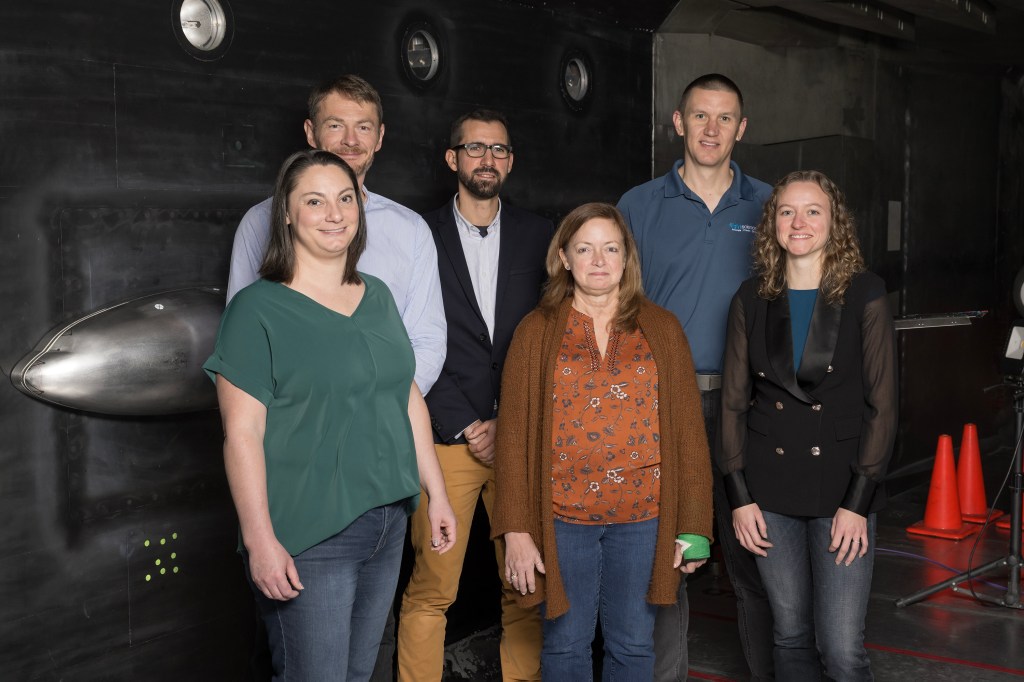 Researchers from the National Office for Aerospace Studies and Research (ONERA), the French aerospace lab, joined NASA and Boeing researchers on December 6, 2023, to visit the National Transonic Facility at NASA Langley Research Center in Hampton, Virginia, where the High Lift Common Research Model is mounted for upcoming wind tunnels test. In the front row is NASA’s Courtney Winski, left, Melissa Rivers, and ONERA’s Annabelle Lipinski. In the back row is ONERA’s Frederic Ternoy, left, ONERA’s Sylvain Mouton, and Boeing’s Adam Clark.NASA
Researchers from the National Office for Aerospace Studies and Research (ONERA), the French aerospace lab, joined NASA and Boeing researchers on December 6, 2023, to visit the National Transonic Facility at NASA Langley Research Center in Hampton, Virginia, where the High Lift Common Research Model is mounted for upcoming wind tunnels test. In the front row is NASA’s Courtney Winski, left, Melissa Rivers, and ONERA’s Annabelle Lipinski. In the back row is ONERA’s Frederic Ternoy, left, ONERA’s Sylvain Mouton, and Boeing’s Adam Clark.NASA 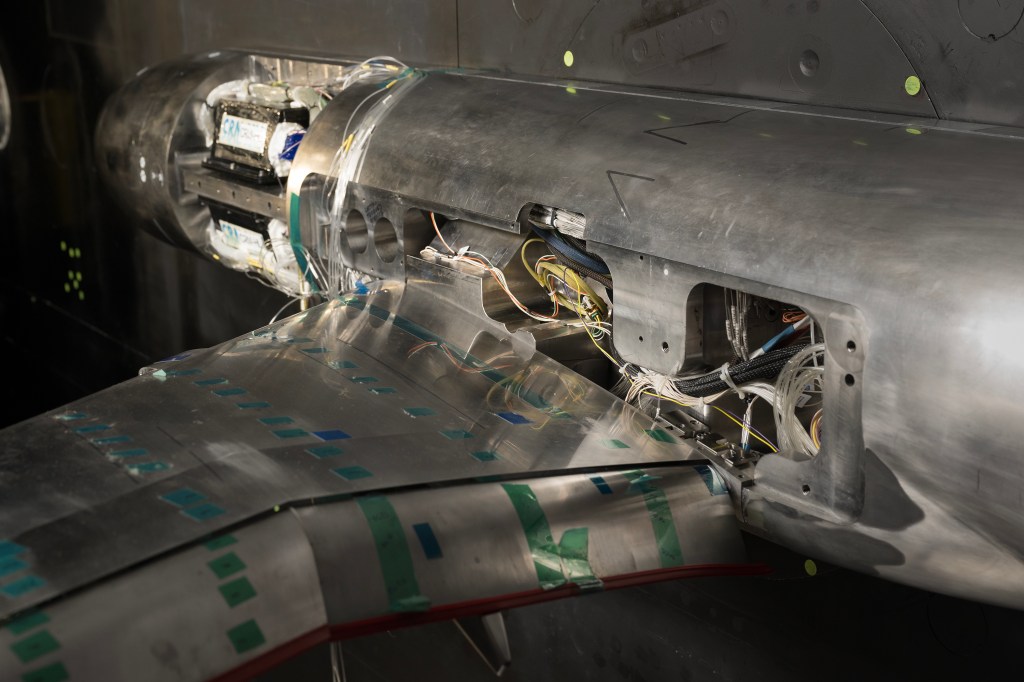 The inside wiring of the 5.2% scale, semi-span version of the High Lift Common Research Model taken at NASA’s Langley Research Center in Hampton, Virginia on November 22, 2023. NASA
The inside wiring of the 5.2% scale, semi-span version of the High Lift Common Research Model taken at NASA’s Langley Research Center in Hampton, Virginia on November 22, 2023. NASA 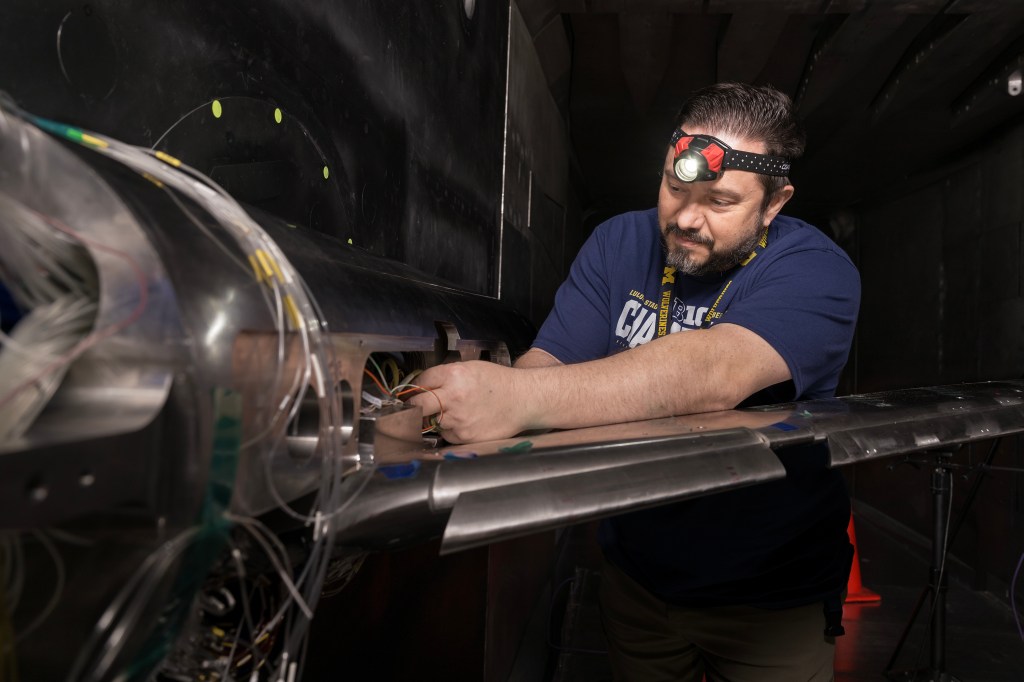 Technician Jamie Erway prepares the 5.2% scale, semi-span version of the High Lift Common Research Model for wind tunnel tests at the National Transonic Facility at NASA’s Langley Research Center in Hampton, Virginia on November 22, 2023. NASA
Technician Jamie Erway prepares the 5.2% scale, semi-span version of the High Lift Common Research Model for wind tunnel tests at the National Transonic Facility at NASA’s Langley Research Center in Hampton, Virginia on November 22, 2023. NASA 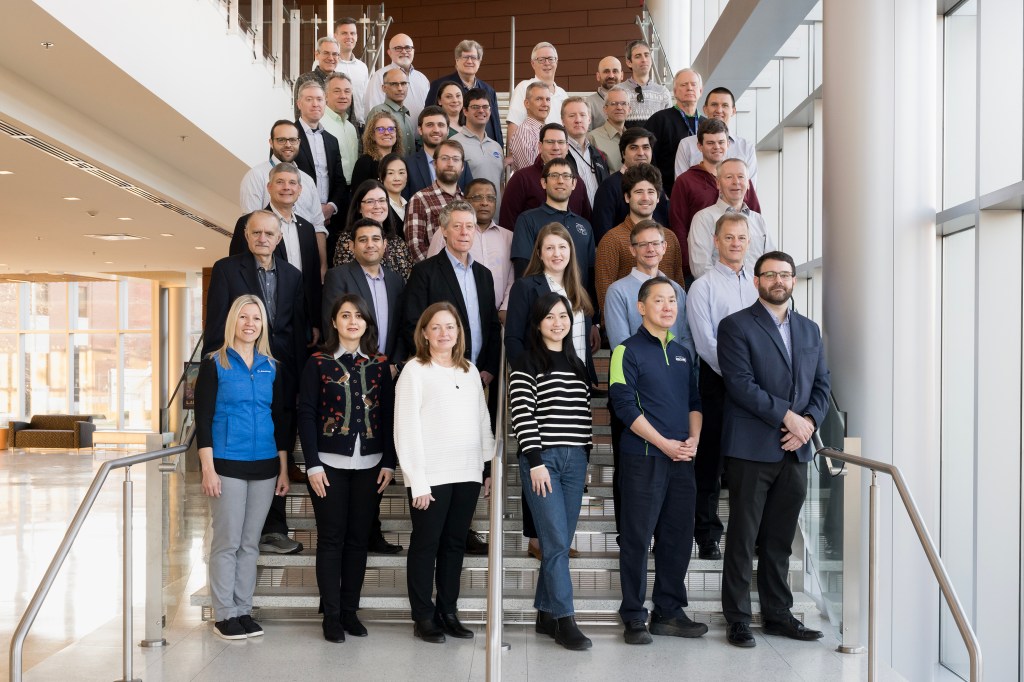 The One NASA Boeing Team, a collaborative partnership between NASA and Boeing, meets at NASA’s Langley Research Center in Hampton, Virginia on December 13, 2023, to share information on recent research around the High Lift Common Research Model and collaborate on next steps and the path forward.NASA Informing Community Initiatives Data from the CRM-HL research effort also are driving NASA’s High Lift Prediction Workshop series. The series is sponsored by the Applied Aerodynamics Technical Committee of the American Institute of Aeronautics and Astronautics.
The One NASA Boeing Team, a collaborative partnership between NASA and Boeing, meets at NASA’s Langley Research Center in Hampton, Virginia on December 13, 2023, to share information on recent research around the High Lift Common Research Model and collaborate on next steps and the path forward.NASA Informing Community Initiatives Data from the CRM-HL research effort also are driving NASA’s High Lift Prediction Workshop series. The series is sponsored by the Applied Aerodynamics Technical Committee of the American Institute of Aeronautics and Astronautics.
The workshops are intended to engage the broader aviation community in these efforts and inspire researchers around the world.
Another goal of this research is to help realize Certification by Analysis, which supports key objectives of the NASA Computational Fluid Dynamics Vision 2030 Study.
NASA, industry, and academia developed the study to lay out a long-term plan for developing future computational capabilities and meeting software and hardware needs for computational fluid dynamics.
The aerospace community will require these resources to efficiently makeaccurate predictions of how air moves around an aircraft. This work also informs the analysis and design of aircraft.
Certification by Analysis would significantly reduce the amount of flight tests required for an aircraft or engine to meet the requirements for airworthiness.
This could save aircraft development programs time and millions of dollars. It could also improve product safety and performance.
The Federal Aviation Administration (FAA) sets the requirements for airworthiness. Companies must provide test results to show new aircraft and engines meet the regulations.
“Before the FAA would allow this type of certification, the analysis must be as accurate as flight testing,” said Rivers.
Facebook logo @NASA@NASAaero@NASA_es @NASA@NASAaero@NASA_es Instagram logo @NASA@NASAaero@NASA_es Linkedin logo @NASA
Keep Exploring Discover More Topics From NASA Missions


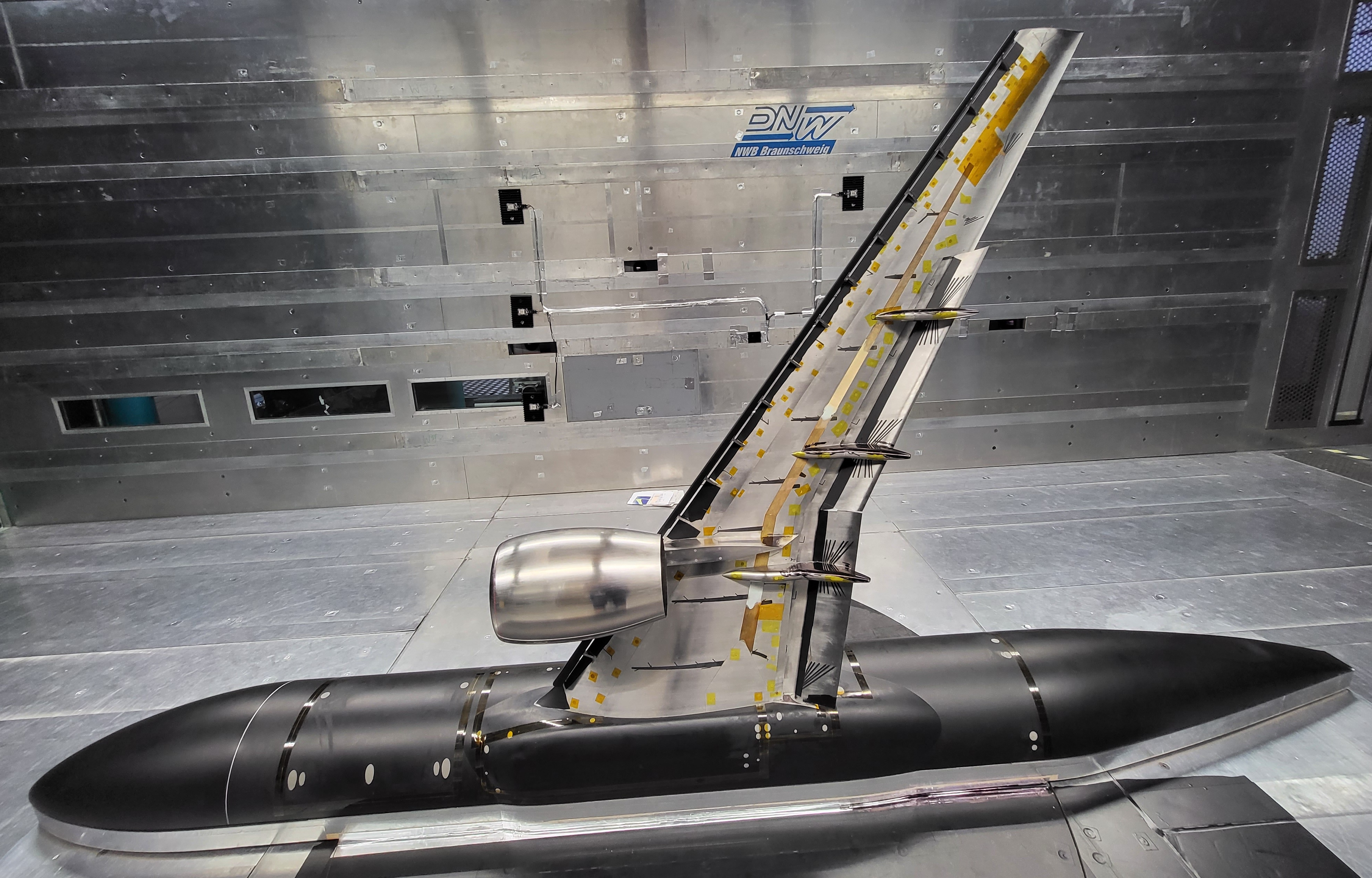
 7 min read ARMD Solicitations Article 2 weeks ago
7 min read ARMD Solicitations Article 2 weeks ago  4 min read Winners Announced in Gateways to Blue Skies Aeronautics Competition Article 2 weeks ago
4 min read Winners Announced in Gateways to Blue Skies Aeronautics Competition Article 2 weeks ago 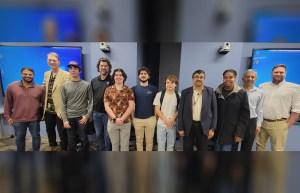 1 min read NASA TACP Team Visits with UCF Students, Faculty Article 3 weeks ago
1 min read NASA TACP Team Visits with UCF Students, Faculty Article 3 weeks ago 

